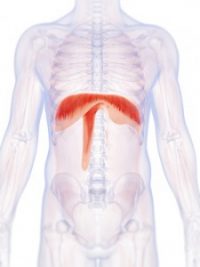Electronic Design News by Steve Taranovich
November 2, 2011

“Avery Biomedical has developed a diaphragm pacing system that uses radio frequency (RF) coupled receivers to transcutaneously send both power and signal. This is important for two reasons:
- There is no implanted battery and therefore nothing to wear-out internally. Barring mechanical damage, the implant is expected to last the lifetime of any patient it is put in regardless of their age.
- There is no percutaneous connection between the implanted and external components. Since the patient’s skin is intact, there are no long-term issues with wound care management and no chronic infection risk.
The other key point is that the system operates on the principle of negative pressure ventilation. That is, by causing the diaphragm to contract the pressure inside the lungs becomes lower than atmospheric pressure and air is drawn in. This is physiologically correct and is we are breathing right now. Positive pressure ventilation (whether by mask or a mechanical ventilator) pushes air in which is not natural and is associated with a high risk of VAP, or ventilator associated pneumonia. VAP is the most common reason for hospital readmissions of ventilator-dependent patients. Reducing hospital readmissions (by paying less for them through Medicare/Medicaid) is a focus of the recent healthcare reforms.”
The article can be viewed in its entirety by clicking here.



